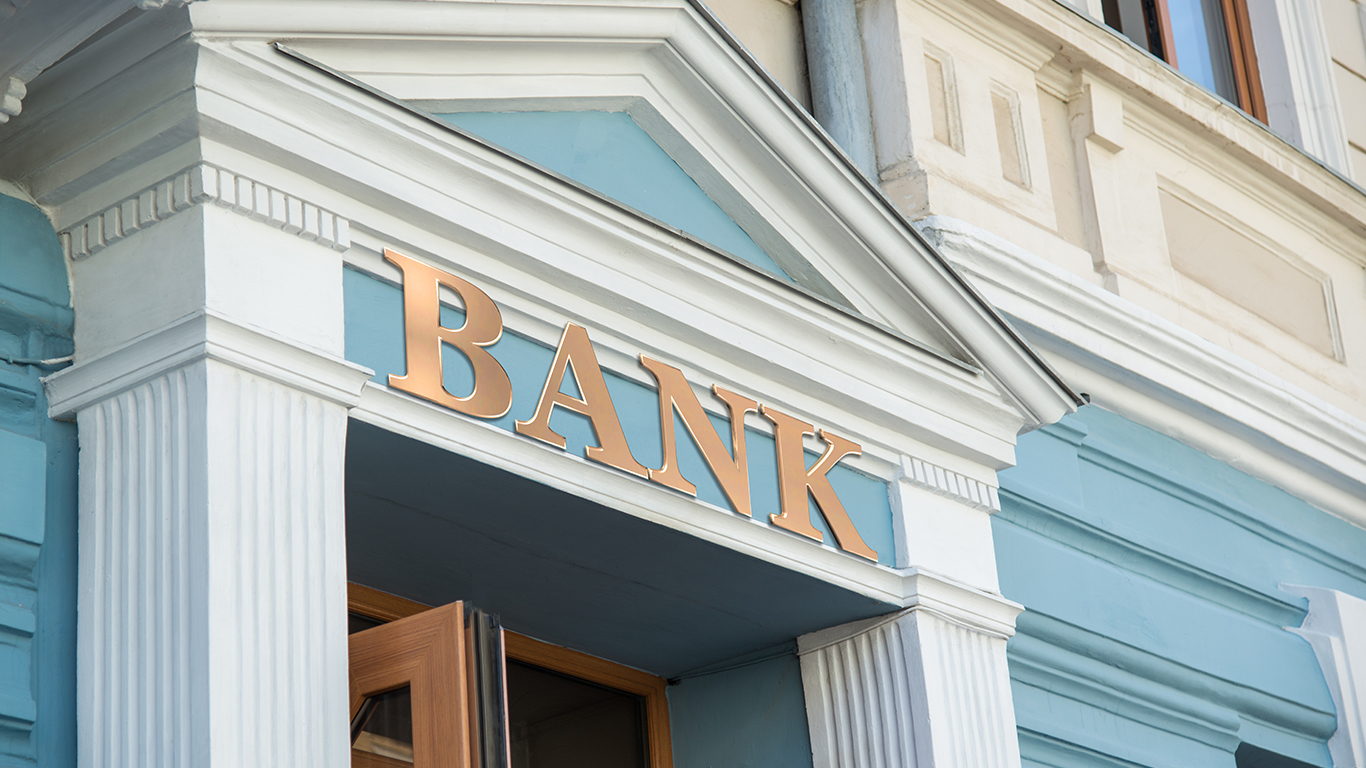Banking, finance, and taxes
Bank Stocks Now Reflect Their Own Bear Market

Published:
Last Updated:

Investors have been blindsided in recent weeks as gains suddenly turned into losses. The reality is that nobody should be surprised that a nine-and-a-half-year bull market may at some point start to peter out. That said, it always feels bad when the inevitable market turn comes into play. And, for the record, it’s not an assured outcome that the bull market is dead. The Dow Jones industrial average is still up 2.8% and the S&P 500 is up 3.5% so far in 2018, even after the recent sell-off. And the Nasdaq 100 is still up about 11% so far in 2018.
One consistent market theory that has been around for years is that the stock market has to have the participation of the financial services sector in a bull market. This implies that the market cannot rise or cannot expect to have massive gains without the financial services sector running higher. In a world in which industrials are facing more uncertainties, the financial services sector has been hurt by the fear that the Federal Reserve is going to hike rates to well above the neutral level.
There is also a growing trend of loan growth that is elusive to muted, at the same time that a peak auto theme has run into a housing slowdown. Fortunately, credit metrics for the American public remain solid. At this time, it seems quite evident that the market just is not wanting to pay higher multiples for the banking sector. Some of the major banks are nearing a 20% drop in their shares from their 2018 highs and 52-week highs, and others are already deep in bear market territory with losses of greater than 20%.
Bank of America Corp. (NYSE: BAC) was last seen trading down 3.2% at $27.40 on Monday, but that is now down over 17% from the highs of this year. A 2.1% dividend yield might not be enough to buffer the bank’s losses.
Citigroup Inc. (NYSE: C) was down 2.8% at $66.93 ahead of Monday’s closing bell, and that is actually down almost 17% from its highs this last year. Citi has a 2.6% dividend yield. Its book value per share was $72.88 at the end of September, and its more strict tangible book value was $61.91 per share.
Goldman Sachs Group Inc. (NYSE: GS), which is among the worst Dow performers by far this year, was last seen down 2% at $222.35. Its shares are actually over 19% lower than their peak value in 2018. That yield of 1.4% isn’t enough to buffer the losses either.
JPMorgan Chase & Co. (NYSE: JPM) is supposed to have the so-called fortress balance sheet, but its drop of 1.2% to $106.62 late on Monday is actually down better than 10% from its highs in 2018. Its dividend yield is almost 3%.
Morgan Stanley (NYSE: MS) was last seen down 2.3% at $45.35 late on Monday, and this one is most similar to Goldman Sachs among the top bank holding companies. Morgan Stanley shares are down over 23% from its 52-week high, despite a 2.6% yield.
Wells Fargo & Co. (NYSE: WFC), which has been embroiled in account and client scandals for well over a year now, was down 2.35% at $51.70 late on Monday. While it has a substantial premium to book value, Wells Fargo shares are over 22% lower than its highs over the last year. Wells Fargo pays a 3.2% yield on its dividend.
And the broader Financial Select Sector SPDR ETF (NYSEARCA: XLF) was last seen down 1.99% at $26.14 on Monday, but that is down about 14% from its peak in the last year. Its top weightings, in order, were recently listed as Berkshire Hathaway, JPMorgan Chase, Bank of America, Wells Fargo, Citigroup, U.S. Bancorp and Goldman Sachs.
Many investors have been worried about the performance of the top momentum technology stocks and other industrial and manufacturing companies in the recent market sell-off. Maybe they should be more worried about the current trading trends that are hurting the major banks and financial giants. Now the big banks are going to have to sell themselves to the investing community as value stocks.
The last few years made people forget how much banks and CD’s can pay. Meanwhile, interest rates have spiked and many can afford to pay you much more, but most are keeping yields low and hoping you won’t notice.
But there is good news. To win qualified customers, some accounts are paying almost 10x the national average! That’s an incredible way to keep your money safe and earn more at the same time. Our top pick for high yield savings accounts includes other benefits as well. You can earn up to 3.80% with a Checking & Savings Account today Sign up and get up to $300 with direct deposit. No account fees. FDIC Insured.
Click here to see how much more you could be earning on your savings today. It takes just a few minutes to open an account to make your money work for you.
Thank you for reading! Have some feedback for us?
Contact the 24/7 Wall St. editorial team.